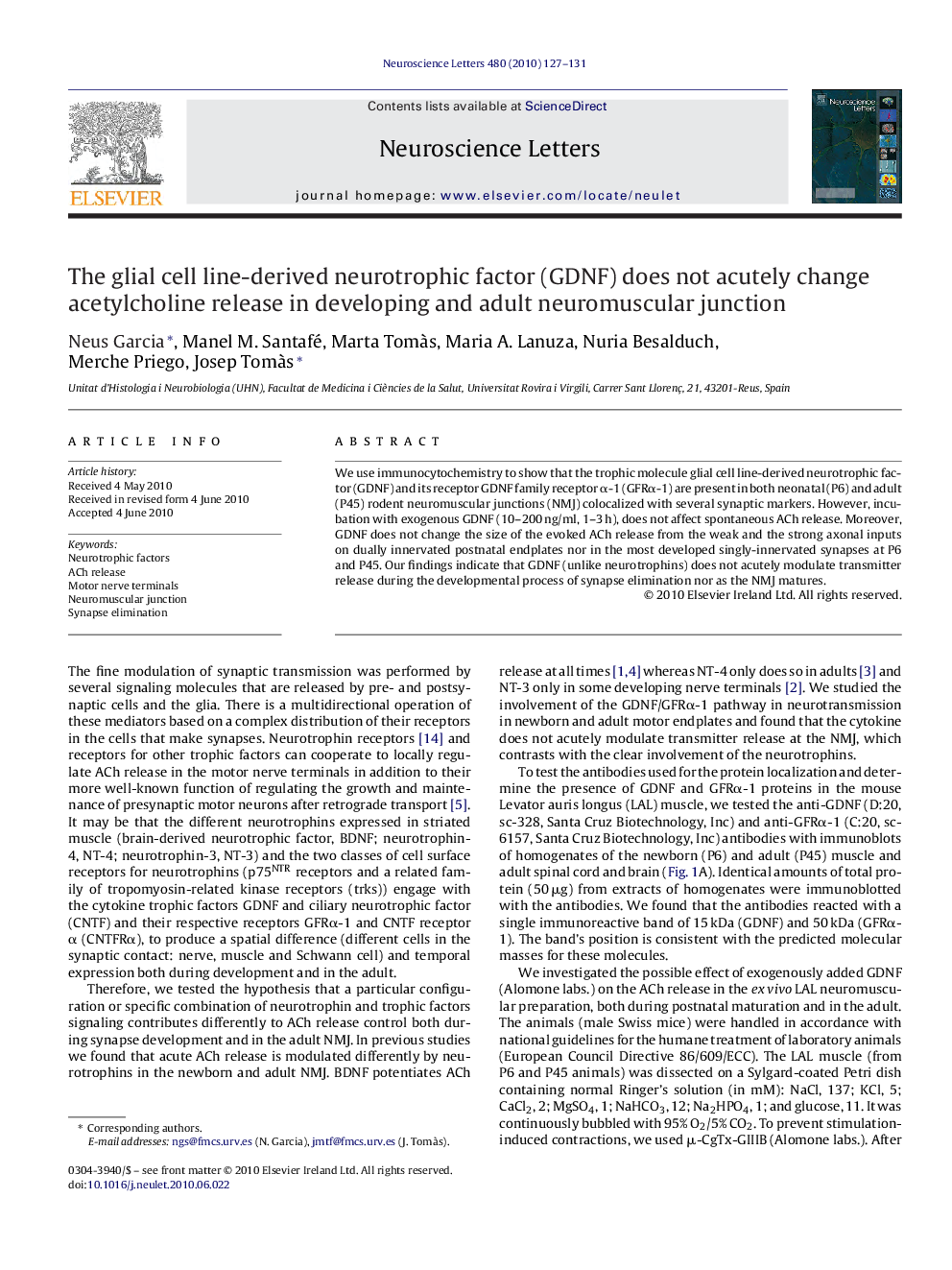| Article ID | Journal | Published Year | Pages | File Type |
|---|---|---|---|---|
| 4346054 | Neuroscience Letters | 2010 | 5 Pages |
Abstract
We use immunocytochemistry to show that the trophic molecule glial cell line-derived neurotrophic factor (GDNF) and its receptor GDNF family receptor α-1 (GFRα-1) are present in both neonatal (P6) and adult (P45) rodent neuromuscular junctions (NMJ) colocalized with several synaptic markers. However, incubation with exogenous GDNF (10-200 ng/ml, 1-3 h), does not affect spontaneous ACh release. Moreover, GDNF does not change the size of the evoked ACh release from the weak and the strong axonal inputs on dually innervated postnatal endplates nor in the most developed singly-innervated synapses at P6 and P45. Our findings indicate that GDNF (unlike neurotrophins) does not acutely modulate transmitter release during the developmental process of synapse elimination nor as the NMJ matures.
Keywords
Related Topics
Life Sciences
Neuroscience
Neuroscience (General)
Authors
Neus Garcia, Manel M. Santafé, Marta Tomà s, Maria A. Lanuza, Nuria Besalduch, Merche Priego, Josep Tomà s,
